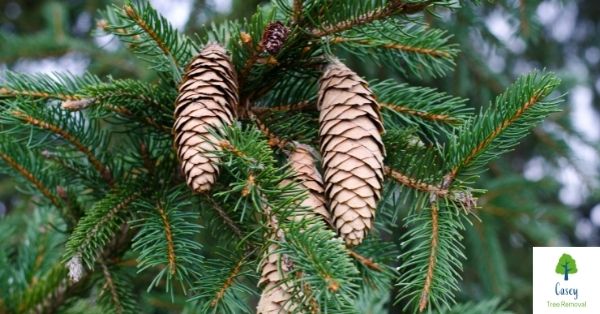Initially, most evergreen trees look pretty comparative and similar at a first glance. Regardless of whether you take a closer look or not, you may not even know what differences you’re looking for. How might you recognize one evergreen tree from another?
How about we answer that question for three regular evergreens: Fir, Spruce and Pine. A couple of unique contrasts set these trees apart, such as the texture of their needles or the surface of their cones.
Here are simple methods in distinguishing these three types of evergreen trees.
The Most Effective Method to Identify a Fir Tree
Fir trees are broadly viewed as the most widely chosen evergreen to use as a Christmas tree. However, that is not all they’re known for! See the most prominent qualities of the needles and cones of a Fir tree beneath.
Fir Tree Identification by Needles
Fir needles develop separately from the tree’s limbs, something not comparable to Pine needles which fill in bunches.
Also, Fir tree needles have the unique characteristics below.
Shape: Fir tree needles are levelled, as though they’ve been flattened. The tip of these needles are round, not sharp.
Surface: Fir needles are delicate and relatively simple to twist.
Fir Tree Cones Identification
What genuinely sets Fir trees apart from other evergreens are their cones. They develop upward, which is not the same as Pine and Spruce cones which hang towards the ground. Furthermore, Fir tree cones can take on an assortment of shadings, similar to green, blue or purple, prior to turning to a more earthy colored tone.
Common Types of Fir Trees:
- Noble Fir
- Balsam Fir
- Grand Fir
- Fraser Fir
- Douglas Fir
The Most Effective Method to Identify A Spruce Tree
There are roughly 40 types of Spruce trees around the world, each with the needle and cone properties underneath.
Spruce Tree Identification by Needles
Like Fir trees, Spruce tree needles develop separately from tree limbs. However, dissimilar to Fir trees, Spruce trees have a little notch between the branch and the needle called the sterigmata. This is the place where the needle develops from.
Here’s additional characteristics on Spruce needles.
Shape: Spruce tree needles are practically square-molded, with unmistakable sides you can feel when you roll a needle in the middle of your fingers. Their tips are sharp and pointy.
Surface: There are many ways to describe the texture of Spruce tree needles, but among the most accurate are hardened and smooth.
Spruce Tree Cones Identification
Spruce tree cones hang towards the ground, and they have slight scopes that make them smoother to the touch than Pine cones. They’re additionally very adaptable. You can marginally twist a Spruce tree cone, yet not a Pine cone.
Common Types of Spruce Trees:
- Colorado Spruce
- Norway Spruce
- Black Spruce
- Alberta Spruce
- White Spruce
The Most Effective Method to Identify A Pine Tree
Pine trees are notable for their fragrant, beautiful cones. The following are more differences that separate these trees from other evergreens.
Pine Tree Identification by Needles
Pine trees are unlike their Spruce and Fir cousins in the way that their needles fill in bunches, as opposed to separately from a branch. A Pine needle bunch can be somewhere in the range of 2 to 5 needles.
Here’s additional identifying information on pine needles.
Shape: Pine tree needles are long and brittle. They’re to some degree level on one side.
Surface: Pine needles are smooth to the touch and relatively adaptable.
Pine Tree Cones Identification
Pine cone scales are hardened and rough to the touch. Dissimilar to Spruce tree cones, Pine cones can’t be twisted easily.
Common Types of Pine Trees:
- Eastern White Pine
- Bristlecone Pine
- Sugar Pine
- Scots Pine
- Loblolly Pine
While they appear similar from afar, evergreen trees can be quite different from one another in many ways. No matter which kind you may use, there is sure to be benefit in your overall landscape.
Casey Tree Removal – All Tree Services including Tree Cutting, Tree mulching, Tree Trimming, Stump Grinding, Tree Pruning, Stump Removal, Emergency Tree Removal Experts In Melbourne!
Click here to read more articles regarding tree removal & related services.
If you are in Junction Village and looking for Casey Tree Removal, below is the best way to visit us.


Recent Comments